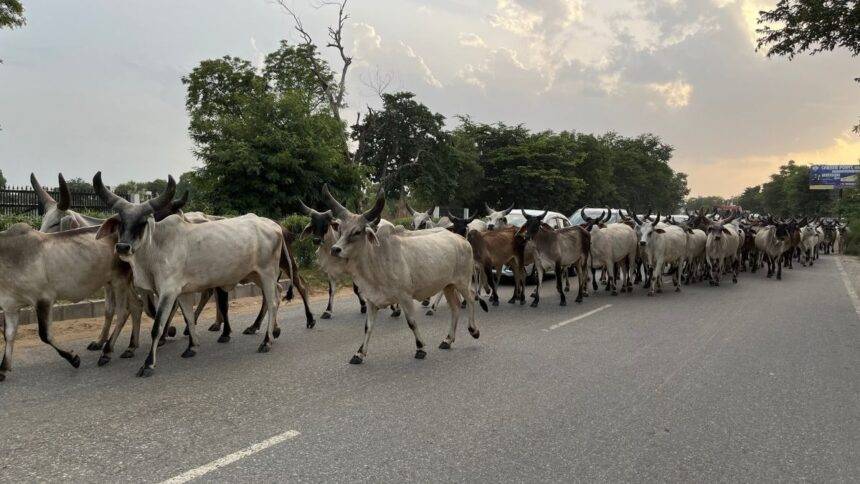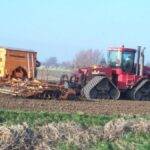Main Points In Hindi (मुख्य बातें – हिंदी में)
-
दुग्ध उत्पादन में भारत की स्थिति: भारत कुल दूध उत्पादन में विश्व में प्रथम स्थान रखता है, लेकिन दूध देने वाले जानवरों की संख्या की तुलना में दूध उत्पादन में वह पीछे है। जबकि अन्य देशों में जानवरों की संख्या कम है, वहाँ दूध उत्पादन अधिक है।
-
पोषण की कमी: देश में दूध देने वाले जानवरों को आवश्यक हरी और सूखी चारा तथा खनिज नहीं मिल पा रहे हैं। जानवरों के उचित पोषण के अभाव में दूध उत्पादन घट रहा है।
-
फसल मूल्य वृद्धि: पशुपालकों का कहना है कि चारा महंगा होता जा रहा है, जिससे उनका दूध उत्पादन प्रभावित हो रहा है। जैसे-जैसे मक्का और सोयाबीन के दाम बढ़ रहे हैं, पशुपालकों को अपनी वित्तीय स्थिति को ध्यान में रखते हुए बेहतर चारा खरीदने में कठिनाई हो रही है।
-
पोषण पर ध्यान की आवश्यकता: विशेषज्ञों का कहना है कि दूध देने वाले जानवरों को क्यों पर्याप्त पोषण नहीं मिल रहा है, इस पर ध्यान केंद्रित करना आवश्यक है। दूध उत्पादन के लिए जानवरों के पोषण को बढ़ाने के लिए हरी चारा, सूखी चारा और खनिजों की मात्रा को उचित रूप से निर्धारित किया जाना चाहिए।
- दुग्ध गुणवत्ता का महत्व: यदि जानवरों को पर्याप्त पोषण नहीं मिलता है, तो न केवल दूध का उत्पादन कम होता है, बल्कि दूध की गुणवत्ता भी प्रभावित होती है। दूध की गुणवत्ता बढ़ाने के लिए जानवरों का पोषण सही ढंग से करना आवश्यक है।
Main Points In English(मुख्य बातें – अंग्रेज़ी में)
-
High Milch Animal Population, Low Production Efficiency: India has a significant population of milch animals (30 crore), yet only about one-third (10 crore) actually produce milk. Despite being the world’s largest milk producer, the country’s milk production per animal is low compared to other nations with fewer animals.
-
Nutritional Deficiencies Affecting Production: The primary challenge identified by dairy experts is the inadequate nutrition provided to milch animals. Rising fodder prices and insufficient access to essential green and dry fodder and minerals are hindering animals’ milk production potential.
-
Economic Burden on Farmers: Many farmers with small herds (three to four animals) often find that the cost of feeding their animals (due to rising fodder prices) consumes a significant portion of their earnings from milk production, thus limiting their ability to invest in better nutrition.
-
Need for a Nutritional Strategy: Experts recommend that feeding practices should be tailored to the specific needs of each cow or buffalo based on their milk output. Proper nutrition, including the right balance of fodder and minerals, is essential for enhancing both the quantity and quality of milk produced.
- Continued Research and Development Efforts: Dairy experts emphasize the importance of ongoing research aimed at increasing milk production per animal. Improving animal nutrition is a critical focal point to bridge the gap between India’s large milch animal population and its relatively low milk yield per animal.
Complete News In Hindi(पूरी खबर – हिंदी में)


देश में डेयरी जानवरों की कमी नहीं है। फिर भी, कितने जानवर हैं, इसकी तुलना में दूध उत्पादन में देश पीछे है। जबकि कई देशों में जानवरों की संख्या कम है, फिर भी उनका दूध उत्पादन अधिक है। लेकिन कुल दूध उत्पादन के मामले में भारत पहले स्थान पर है। आप सोचेंगे कि ऐसा क्यों है? इस खबर में हम आपको बताएंगे कि कैसे भारत दूध उत्पादन में पहले नंबर पर होते हुए भी, देश के डेयरी विशेषज्ञ जानवरों की तुलना में दूध उत्पादन बढ़ाने की कोशिश कर रहे हैं। वे हमेशा रिसर्च करते रहते हैं कि प्रत्येक जानवर से दूध उत्पादन कैसे बढ़ाया जाए।
विशेषज्ञों का कहना है कि इसके पीछे कई बड़े कारण हैं, लेकिन सबसे बड़ा कारण जानवरों का भोजन है। एक डेयरी जानवर को आवश्यक हरा और सूखा चारा और मिनरल नहीं मिल पा रहे हैं। पशुपालकों का कहना है कि चारे की कीमतें दिन-ब-दिन बढ़ रही हैं, जिससे यह व्यवस्था बिगड़ रही है। यदि जानवरों को अच्छा चारा नहीं मिलता है, तो इसका दूध उत्पादन घटता है।
इसके अलावा पढ़ें: राष्ट्रीय दूध दिवस: क्या आप जानते हैं इन 5 फ्यूचर मिल्क के बारे में, न केवल दूध बल्कि दवा भी
30 करोड़ डेयरी जानवर और 10 करोड़ दूध देने वाले जानवर
महाराष्ट्र के डेयरी पोषण विशेषज्ञ डॉ. दिनेश भोसले ने बताया कि 2023 में हमारे देश में 23 करोड़ टन दूध का उत्पादन हुआ है। इसमें 55 प्रतिशत हिस्सा भैंस का और 45 प्रतिशत गाय का है। बकरी का हिस्सा तीन प्रतिशत है। हमारे देश में 30 करोड़ जानवर हैं, लेकिन इनमें से केवल 10 करोड़ जानवर दूध देते हैं। इसका कारण यह है कि हमारी सभी कोशिशें दूध उत्पादन को बढ़ाने पर हैं, लेकिन हम जानवरों के पोषण पर ध्यान नहीं दे रहे हैं। सामान्य रूप से गायों और भैंसों को कम से कम 10 किलोग्राम हरा चारा और 5 किलोग्राम सूखा चारा दिया जाना चाहिए। इसके अलावा, यदि आपकी गाय या भैंस 10 किलोग्राम दूध देती है, तो उसे कम से कम 5 किलोग्राम मिनरल मिक्सचर भी दिया जाना चाहिए।
इसलिए गाय-भैंस के दूध का उत्पादन नहीं बढ़ रहा
भारतीय डेयरी संघ के अध्यक्ष और अमूल के पूर्व एमडी आरएस सोधी का कहना है कि हमारे देश में कई लोग 3-4 गाय और भैंस पालते हैं। ऐसी स्थिति में, उनके दूध से होने वाली आमदनी का एक बड़ा हिस्सा चारा और मिनरल खरीदने में खर्च होता है। मक्का और सोयाबीन की बढ़ती कीमतें किसी से छिपी नहीं हैं। यदि इन्हें नहीं खिलाया गया, तो जानवर न केवल कम दूध देंगे, बल्कि दूध की गुणवत्ता भी अच्छी नहीं होगी। यही कारण है कि पशुपालक जानवरों को मौसमी हरे चारे पर ज्यादा निर्भर करते हैं ताकि मिनरल की कमी पूरी की जा सके। जबकि पोषण विशेषज्ञों के अनुसार, यह तरीका गलत है। अच्छी मात्रा में दूध के लिए चारे और मिनरल की मात्रा को जानवर द्वारा दिए जाने वाले दूध के अनुसार निर्धारित करना चाहिए। और दूध उत्पादन बढ़ाने से दूध की लागत भी कम की जा सकती है।
इसके अलावा पढ़ें: मत्स्य पालन: सर्दियों में मछलियों को भी ठंड लगती है, बीमार होती हैं, उनकी जान बचाने के लिए उन्हें इस तरह गर्म किया जाता है
Complete News In English(पूरी खबर – अंग्रेज़ी में)
There is no shortage of milch animals in the country. Despite this, the country is far behind in milk production compared to the number of animals. Whereas there are many countries where the number of animals is less and milk production is more. But when it comes to total milk production, India ranks first in the world. Now you will say what happened? In this news, we are going to tell you how despite being number one in milk production, the dairy experts of the country still try to increase milk production in comparison to animals. His research always continues on how to increase milk production per animal.
However, experts say that there are many big reasons behind this, but the biggest reason is the food of animals. A milch animal is not able to get all the green and dry fodder and minerals it needs. Animal farmers say that this system is deteriorating due to fodder becoming expensive day by day. If animals are not getting good fodder, milk production is decreasing due to this.
Also read: National Milk Day: Not only milk but also medicine, do you know about these 5 future milks
30 crore milch animals and 10 crore milk giving animals
Maharashtra’s dairy nutrition expert Dr. Dinesh Bhosle says that in the year 2023, 23 crore tonnes of milk has been produced in our country. Out of this, 55 percent share is of buffalo and 45 percent is of cow. Goat’s share in all this is three percent. There are 30 crore animals in our country, but out of them only 10 crore animals give milk. The reason for this is that our entire focus is on increasing milk production, but we do not pay attention to the nutrition of the animals. Whereas normally cows and buffaloes should be fed at least 10 kg of green fodder and five kg of dry fodder. Not only this, if your cow or buffalo gives 10 kg milk then it should also be fed at least five kg mineral mixture.
That’s why cow-buffalo milk is not increasing
RS Sodhi, President of the Indian Dairy Association and former MD of Amul, says that many people in our country rear three-four cows and buffaloes. In such a situation, a large part of their milk earnings is spent in purchasing fodder and minerals. The rising prices of maize and soybean are not hidden from anyone. If these are not given to eat, the animal will not only give much milk but will also not give good fat. Meaning the milk will not be of quality. This is the reason why animal farmers keep animals more on green fodder according to the season to meet the deficiency of minerals. While according to nutrition experts, this method is wrong, for more and better milk, the amount of minerals including green and dry fodder should be decided according to the milk given by the animal. And the cost of milk can also be reduced only by increasing the production of milk.
Also read: Fisheries: In winter, fish also feel cold, become sick, to save their lives, they are given warmth like this








